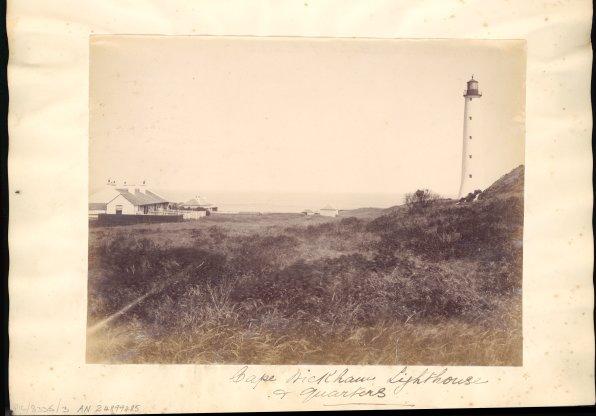Cape Wickham Lighthouse on:
[Wikipedia]
[Google]
[Amazon]
The Cape Wickham Lighthouse is a
 The superintendents were required to be extremely self-sufficient, as only one supply ship visited the site a year. Some of the lightkeepers resorted to
The superintendents were required to be extremely self-sufficient, as only one supply ship visited the site a year. Some of the lightkeepers resorted to
Australian Maritime Safety Authority
{{Authority control Lighthouses completed in 1861 King Island (Tasmania) Lighthouses in Tasmania 1861 establishments in Australia Commonwealth Heritage List places in Tasmania Tasmanian Heritage Register
lighthouse
A lighthouse is a tower, building, or other type of physical structure designed to emit light from a system of lamps and lenses and to serve as a beacon for navigational aid, for maritime pilots at sea or on inland waterways.
Lighthouses mar ...
situated at Cape Wickham
Cape Wickham is the most northerly point of King Island, Tasmania, Australia. From here, it is to Cape Otway on the Australian mainland. In the 19th century, ships coming from Europe would sometimes attempt to sail between Cape Wickham and Cap ...
on King Island King Island, Kings Island or King's Island may refer to:
Australia
* King Island (Queensland)
* King Island, at Wellington Point, Queensland
* King Island (Tasmania)
** King Island Council, the local government area that contains the Tasmanian is ...
, Tasmania. At tall, it is Australia's tallest lighthouse. The lighthouse is listed on the Commonwealth Heritage Register.
There are eleven timber flights of stairs in the lighthouse, with twenty steps each, which must be climbed in order to reach the top. Surrounding the lighthouse are the remains of a number of associated buildings, including a small church. There are also a number of gravestones, many belonging to those who were shipwrecked in the area after the lighthouse was built.
History
The lighthouse was originally established in 1861, in response to the sinking of the barque '' Cataraqui'' sixteen years earlier, a disaster which had resulted in the deaths of 400 people. While it was being constructed, some worried that the lighthouse would cause more shipwrecks than it prevented, as lighthouses usually showed the way to safety rather than warning of danger as the Cape Wickham lighthouse was designed to do. Nonetheless, the lighthouse was eventually completed, although shipwrecks frequently continued to occur until theCurrie Lighthouse
Currie Lighthouse was built following agitation by Archibald Currie and others for a lighthouse at Currie Harbour, Currie, King Island, Australia in 1879. Planned and fabricated by Chance Brothers in Smethwick, England, it was devised as a -tal ...
was completed in 1879. Built from locally quarried stone, the lighthouse was staffed by a superintendent until the light was automated in the 1920s. The superintendent often came into conflict with hunters and other established inhabitants of the island, with one 1873 report stating:
 The superintendents were required to be extremely self-sufficient, as only one supply ship visited the site a year. Some of the lightkeepers resorted to
The superintendents were required to be extremely self-sufficient, as only one supply ship visited the site a year. Some of the lightkeepers resorted to looting
Looting is the act of stealing, or the taking of goods by force, typically in the midst of a military, political, or other social crisis, such as war, natural disasters (where law and civil enforcement are temporarily ineffective), or rioting. ...
and theft to supplement these supplies, with one keeper being dismissed for storing goods that his brother had looted from a shipwreck.
In the 1920s, it was determined that it was no longer necessary for the light to be staffed on a full-time basis, and automation systems were added to the lighthouse. At this time, a number of the surrounding buildings were also demolished, including the superintendent's residence. The lighthouse continued to be looked after by the lighthouse keeper from nearby Currie.
During preparations for the 150th anniversary of the lighthouse, it was discovered that it had never been officially opened. To rectify this oversight, Australian Governor-General
Governor-general (plural ''governors-general''), or governor general (plural ''governors general''), is the title of an office-holder. In the context of governors-general and former British colonies, governors-general are appointed as viceroy t ...
Quentin Bryce officially opened the lighthouse in a ceremony on 5 November 2011.
See also
* History of Tasmania * List of lighthouses in TasmaniaReferences
External links
Australian Maritime Safety Authority
{{Authority control Lighthouses completed in 1861 King Island (Tasmania) Lighthouses in Tasmania 1861 establishments in Australia Commonwealth Heritage List places in Tasmania Tasmanian Heritage Register